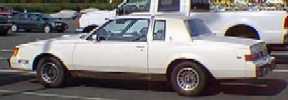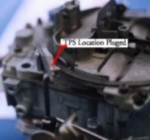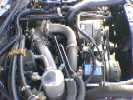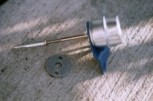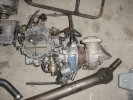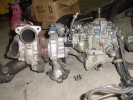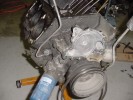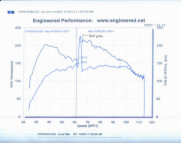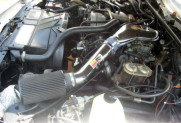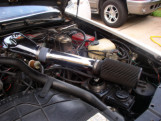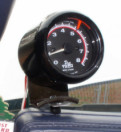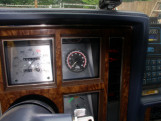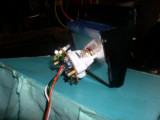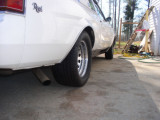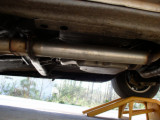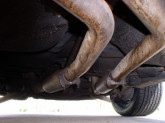When you first get the car inspect all the
vacuum lines for cracking. I suggest to go ahead and replace most of the lines.
It’ll cost you about $30 and will be saving your self work & trouble
shooting later. Next give it a good tune up and change the oil. I change my oil
about every 2000 miles, this will help prolong the life of the turbo. Next take
a hard look at your headers(bet they are cracked at #5,2 & maybe 6 cylinders.
Number 5 will be the hardest to see. These crackers will make your car run lean
at load and burn your valves or maybe blow a HEAD GASKET
The first thing that you will need to buy is
a good Vacuum / Boost gauge, I suggest the Auto Meter Ultra-Lite 4301. I made
the mistake of getting the 2310 gauge, it works good but the 4301 fits in the
cup better, is more accurate & looks better. The next guage will be a oil
gauge, you need to keep a good eye on the oil pressure. If it fails you will lose
your turbo. Third I would get a knock guage, If you have knock you'll blow a HG
Now that you have your gauges it's time to start your mods.
Click on a image to enlarge
|
Picture of my car. |
TPS plugged. |
TPS unplugged. |
||
|
|
||||
|
The Turbo 6! |
Bracket installed. |
Bracket installed backwards. |
Car squezed in |
|
 |
 |
 |
|---|---|---|---|---|
|
Car back |
Car back |
From the Dogs side |
Trans Tag from the Orginal |
|
|
Pictures of the carb turbo. |
cyl 2,4,6/blown @ 2 & 6. |
Stainless oil line |
||
|
|
||||
|
The front of the engine |
Dyno 08 Jun 04 |
The intake |
83 & 79 actuators |
|
Boost control & Alky/Water kit at low costThis
is a great site for the home builder. It's easy and cheap! .
I'll be adding more info later, like how I replaced
my wastegate actuator with a universe. Good luck finding a stock replacement. The one above
is the one I make. I will try to add a FAQ as well.
Testing the TPS with a volt meter (a good quality one is highly recommended):
There are 3 wires on the TPS sensor; you will need to only use the bottom 2.
I use the middle wire for red and the bottom one for ground.
The stock setting for the TPS at low set on the choke is .78. Most of us have found that
This is to low for performance.
1.2 seems to be the best setting so far at curb idle or low set on the choke.
High set should be at 1.4 – 1.45
Quoted from B4Black:
My TPS is at 1.45 V on high set (but different engines, ECM, etc use different values).
I haven't figured out everything it effects, but it does effect TCC lock up. At low values, the TCC will disengage. If it's too low, the TCC will be disengaged while going down the highway with the cruise control on. I raised my setting to prevent it from constantly engaging/disengaging. (1.2)
OK, I was just looking a Poston's catalog. They have a device (made by Casper's I believe) that tricks the ECM into believing that the TPS is open further than it is to provide earlier WOT enrichment. It claims that the factory setting is at 4.66 mV for the SFI cars. The device provides WOT enrichment at 3.5 mV.
If WOT enrichment begins at 4.66 (presuming our cars use the same setting), this means the TPS setting at fast idle needs to be at above 1.42. This is a problem. The range of the TPS is not wide enough to achieve both the high setting and the low setting at the same time.
It looks like you'll have to choose low or high. Low may give better drivability, high will give better WOT (less detonation). I know which I'm choosing.
Testing is cutesy of Freddie’s Buick
Return to Home Page
or to the top of the page. This
is site built by my friend Kenny.
Tell me how much you like my page.
Last Modifed: 1 June 04
